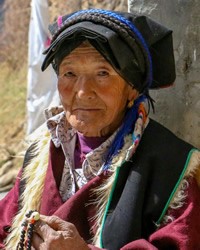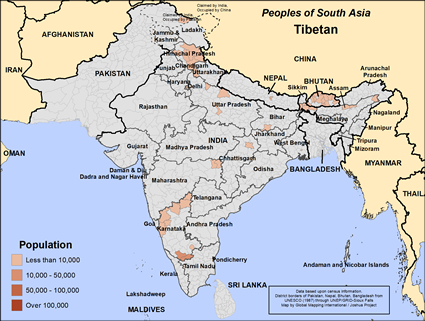Tibetan in Bhutan

Photo Source:
szyj351 - Pixabay
|

Map Source:
People Group data: Omid. Map geography: UNESCO / GMI. Map Design: Joshua Project
|
| People Name: | Tibetan |
| Country: | Bhutan |
| 10/40 Window: | Yes |
| Population: | 4,700 |
| World Population: | 1,104,400 |
| Primary Language: | Tibetan, Central |
| Primary Religion: | Buddhism |
| Christian Adherents: | 0.00 % |
| Evangelicals: | 0.00 % |
| Scripture: | Complete Bible |
| Ministry Resources: | Yes |
| Jesus Film: | Yes |
| Audio Recordings: | Yes |
| People Cluster: | Tibetan |
| Affinity Bloc: | Tibetan-Himalayan Peoples |
| Progress Level: |
|
Introduction / History
Although the Tibetans strongly maintain they are one people and are opposed to any attempts to classify them as separate groups, the Tibetan nationality clearly divides into numerous linguistic components.
Central Tibetan - which contains five dialects - "is more commonly known as central Bus (transliterated from U, the spoken version of the same word). Educated people from other areas of Tibet traditionally retained their local variety and learned the literary variety of Central Tibetan."
Written records of Tibetan history have survived from the seventh century AD, but it is known that nomadic tribes roamed Tibet as early as the second century BC. The cradle of Tibetan civilization is the Yarlung Valley area, about 80 kilometers (49 mi.) southeast of Lhasa. There, according to tradition, the union of a monkey and a she-devil created the Tibetan race. Around AD 600 the warrior-king of Yarlung, Namri Gampo, unified the clans of Tibet. He acquired a princess from Nepal and another one from China to be his wives. Under the persuasion of these two women, he combined the ancient Tibetan religion of Bon with Buddhist teachings.
What Are Their Lives Like?
For centuries the Chinese have claimed Tibet as an "unalienable part of China," despite Tibetans being culturally, historically, linguistically, and religiously distinct from Chinese. In the 1950s the Chinese took full control of Tibet.
What Are Their Beliefs?
The Tibetan Buddhist religion is the life-blood of the Tibetan people. It was placed over the powerful Tibetan religion of Bon, which is a mixture of magic, divination, demon worship, and sacrifices. The patron saint of Tibet is Chenrezig, whose image has up to 11 heads and from 2 to 1,000 arms.
What Are Their Needs?
Tibetan peoples have long been one of the greatest challenges for Christianity. In 1892 Hudson Taylor said, "To make converts in Tibet is similar to going into a cave and trying to rob a lioness of her cubs." Timothy, the Nestorian patriarch in Baghdad (778-820), referred to Christians in Tibet and indicated he was willing to assign a missionary to them. Today there are just one or two small Tibetan fellowships in Lhasa. Would-be missionaries face opposition from Buddhist monks, the Chinese authorities, and pro-Tibet foreigners living in Tibet.
Prayer Points
Pray for the Tibetans in Bhutan to find Jesus Christ to be of such high value that they will forsake all others.
Pray for Tibetan disciples to make disciples of others throughout Bhutan.